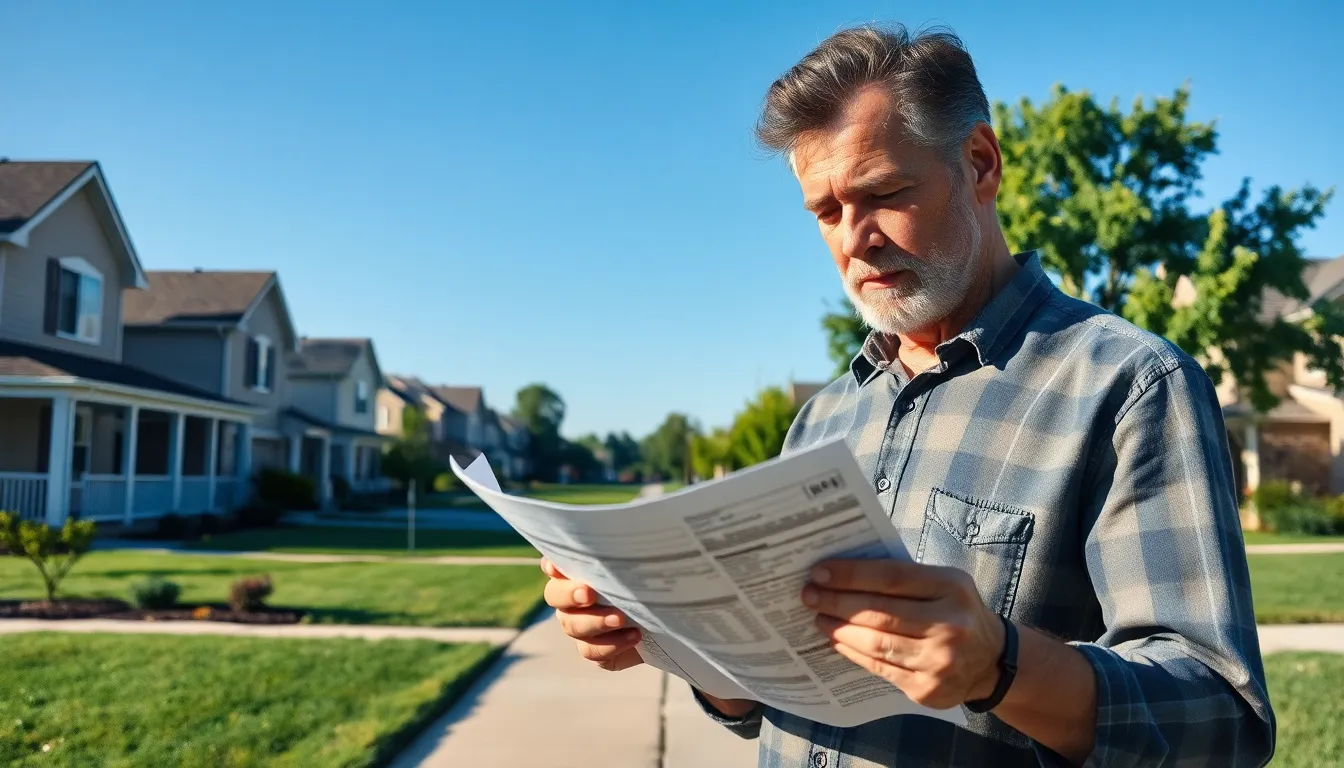Property tax limits might sound as thrilling as watching paint dry, but they play a crucial role in keeping wallets intact and homeowners happy. Imagine a world where your property taxes don’t skyrocket faster than your neighbor’s new sports car. Sounds dreamy, right? These limits are designed to prevent local governments from pulling a fast one on hardworking citizens, ensuring that tax bills remain manageable.
Table of Contents
ToggleUnderstanding Property Tax Limits
Property tax limits exist to safeguard homeowners from excessive financial burdens. These limits play a crucial role in maintaining community stability and fairness.
Definition of Property Tax Limits
Property tax limits refer to restrictions that cap the annual increase in assessed property values or tax rates. Many jurisdictions impose these limits to regulate how much local governments can raise taxes each year. They vary by state and can apply to residential properties, commercial establishments, or both. States often establish specific thresholds, commonly set at 1% to 5%, to control taxation. In some areas, voters may even have to approve any changes beyond these limits. These definitions clarify the structure and implementation of property tax limits across different regions.
Purpose of Property Tax Limits
Property tax limits aim to protect homeowners from steep tax hikes. Such limits ensure that families can afford their homes without facing overwhelming financial strain. Lower rates promote housing stability and community well-being. Tax limits also encourage local governments to prioritize budget efficiency, thereby fostering responsible fiscal management. They provide predictability for homeowners in planning their finances, reducing uncertainty in budgeting. Overall, property tax limits play a significant role in maintaining the balance between funding local services and protecting taxpayers.
Types of Property Tax Limits

Property tax limits can be categorized into several types, primarily assessment limits and rate limits. Each type serves a distinct purpose in regulating property taxes, providing homeowners with varying protections against rising costs.
Assessment Limits
Assessment limits restrict the annual increase in property assessed values. Many states cap this increase to a specific percentage, often around 2% to 3% per year. For example, California’s Proposition 13 limits increases to 2% annually, ensuring manageable growth in assessed value. These limits prevent significant spikes in property taxes due to sudden market fluctuations. They facilitate long-term affordability for homeowners by tying property value assessments to reasonable increases, encouraging stability within local communities.
Rate Limits
Rate limits control how much local governments can charge in property tax rates. Typically, these rates are capped at a specific percentage, such as 1% or less of the assessed value. Many jurisdictions require voter approval for rate increases beyond set thresholds. For instance, in Florida, the maximum property tax rate is capped at 10 mills per dollar of assessed value. Such limits provide predictability in tax obligations, helping homeowners effectively plan their budgets. By managing rate increases, local governments promote fiscal responsibility while maintaining essential public services.
Impacts of Property Tax Limits
Property tax limits significantly affect both local governments and homeowners. Understanding these implications helps clarify the broader impact on communities.
Effects on Local Governments
Local governments experience constrained revenue growth due to property tax limits. They rely heavily on property taxes for funding essential services such as schools, roads, and public safety. Budgeting becomes challenging when tax increases fall below the demand for services. Many localities face difficult decisions, such as cutting programs or increasing fees for services. In response to these limits, some may seek alternative funding sources, like sales taxes or grants. Balancing financial needs with taxpayer protection remains a critical challenge for local governance.
Effects on Homeowners and Property Values
Homeowners benefit considerably from property tax limits. These limits maintain predictable and manageable tax bills, contributing to financial stability. Stability encourages homeownership, allowing families to invest in their properties without fear of sudden tax increases. Property values can also be positively affected, as stable taxes attract new buyers to the market. A predictable tax environment fosters long-term community investments and improvements. Overall, property tax limits enhance affordability, creating a more favorable housing market and supporting community growth.
Recent Trends and Changes
Recent legislative developments highlight shifts in property tax limits across various states. Changes aim to balance community needs with homeowner protections, reflecting evolving economic conditions.
Legislative Updates
Voters in several states approved new property tax measures in the past year. California’s recent adjustments include an increase in the assessment cap to 3% annually, providing more stability for homeowners while safeguarding local revenue. Texas introduced legislation allowing local governments to exceed tax limits for funding crucial services, requiring transparent voter communication. As local governments navigate budget constraints, these legislative changes will likely shape property tax policies moving forward.
Case Studies from Different States
States illustrate diverse approaches to property tax limits. Florida’s law maintains a 10% cap on tax increases without voter approval, promoting predictable budgeting for homeowners. Michigan enacted a proposal capping growth at 5%, adjusting for inflation, which helps retain affordability amid rising market values. In contrast, New York’s local governments face stricter constraints, prompting discussions surrounding alternative funding models to enhance service delivery. Each case showcases different strategies informing policy changes and impacts on communities.
Property tax limits are essential in fostering a stable financial environment for homeowners. By capping tax increases, these limits ensure that families can manage their budgets without the fear of sudden financial strain.
As local governments navigate the challenges posed by these constraints, the ongoing dialogue around property tax reform will continue to shape community dynamics.
Ultimately, the balance between generating necessary revenue for public services and protecting homeowners’ financial well-being remains a crucial consideration for policymakers. Understanding the implications of property tax limits allows homeowners to make informed decisions about their investments and future.




